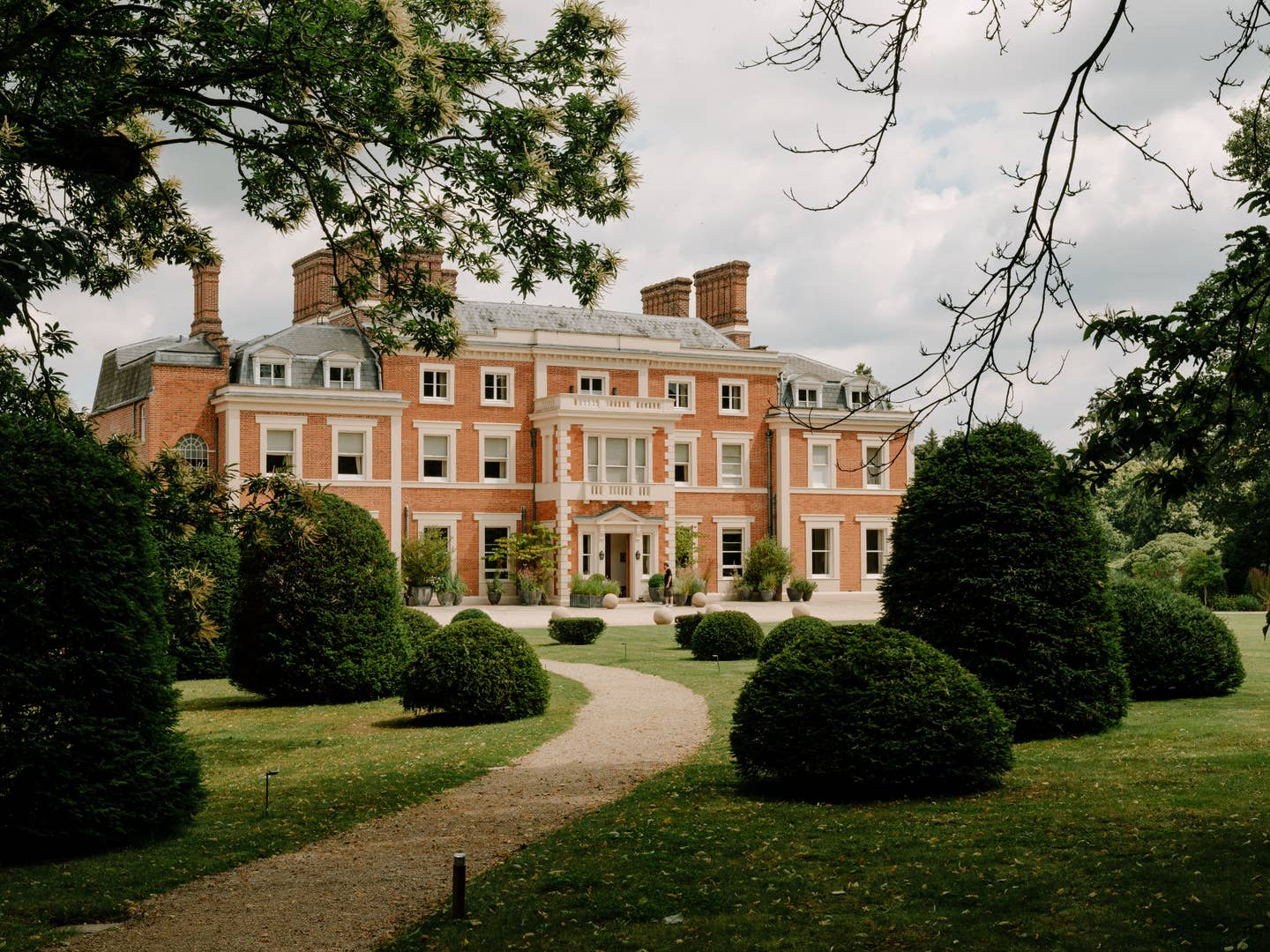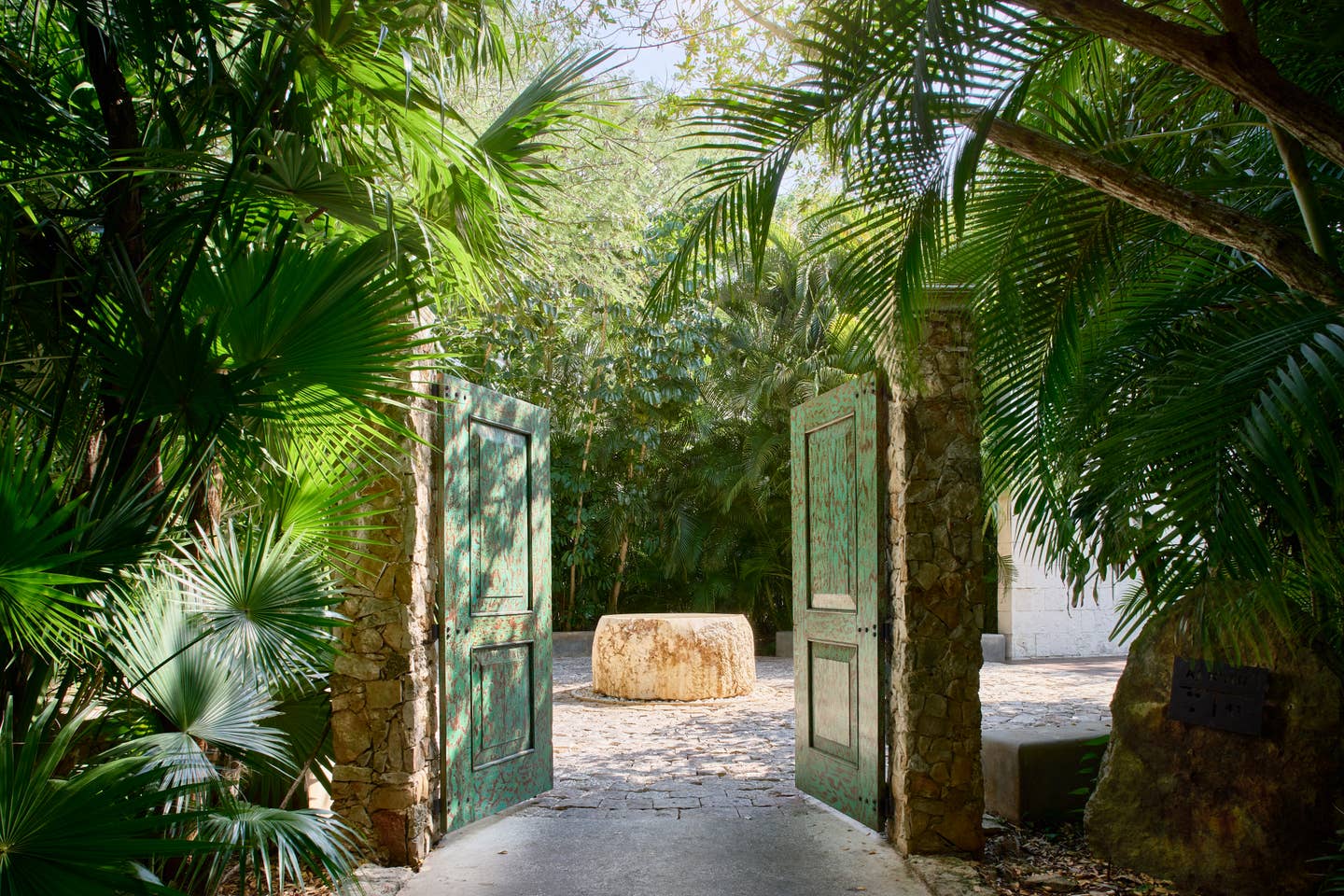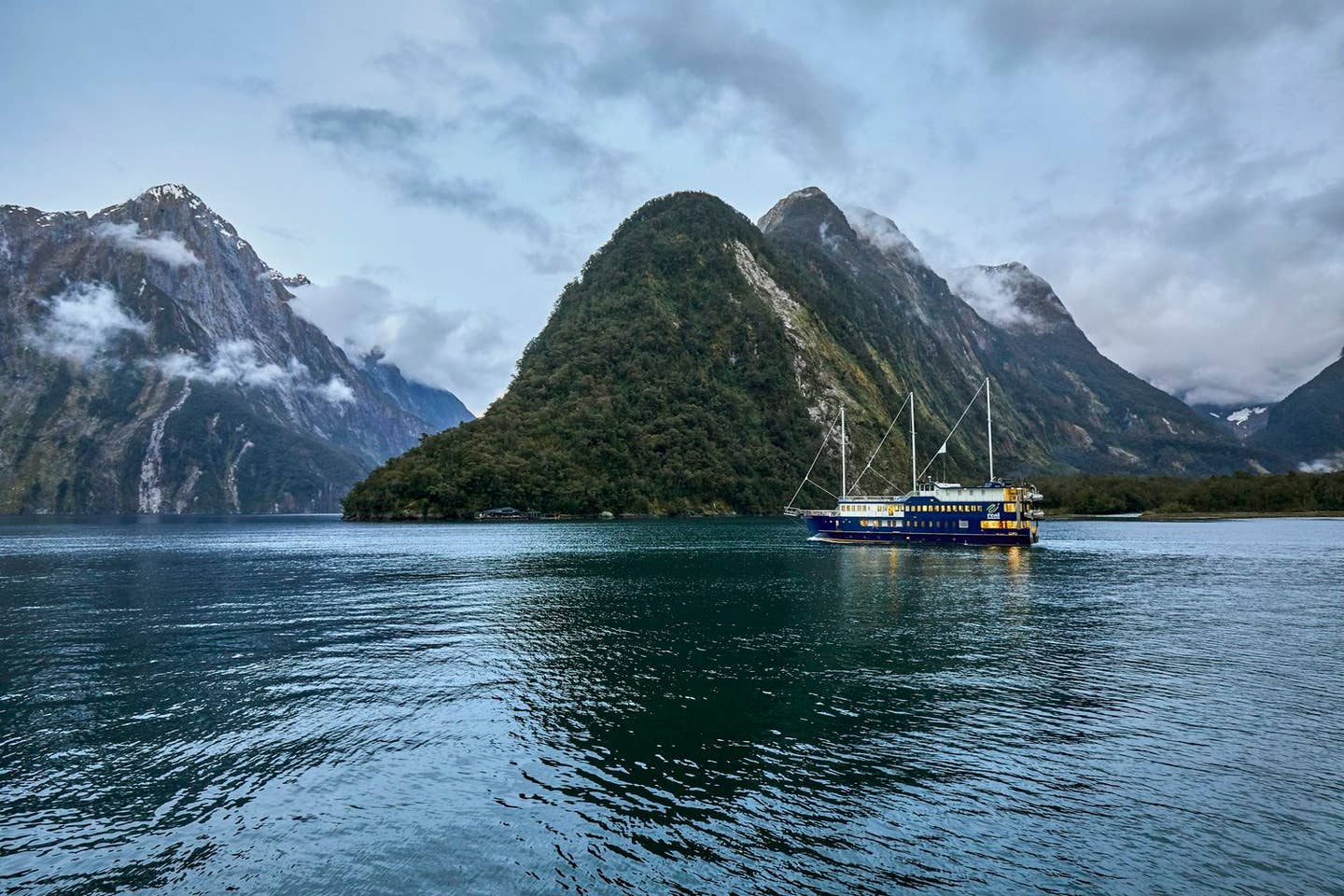With their new Taste of Auberge: Baja Lab Kitchen, Chileno Bay Resort and Residences, an Auberge Resorts Collection property, is inviting insanely talented people to collaborate with a chef who is not only rooted in his cultural identity, but also honed his fine dining chops at The French Laundry. The result? A culinary extravaganza in a drop-dead gorgeous restaurant.
Picture an orange moon hovering on the horizon. Cacti, hibiscus, and bougainvillea against the stark beauty of the desert. Small bottles of mezcal made from the wild agave found in the hills. A tasting menu that revels in Kenyan and Ethiopian spices alongside modern Mexican food. This is narrative cooking. Cooking as language. Cooking as story.
Chileno Bay Resort has not only all the bells and whistles—check out those yachts in the bay, the humpback whales in the Sea of Cortez, the dark blue pools spilling down to the beach—but it’s the people who make the place. Identity is so important, and nowhere is that more evident than in their choice of guests to kick off their new dinner series.
Saqib Keval and Norma Listman, partners in food and life, own Masala y Maiz, a buzzy restaurant in Mexico City. Saqib Keval grew up in Northern California, but his family is from Kenya and Ethiopia by way of South Asia, a cultural template that explains the Swahili influence in his food. His training began in Bay Area kitchens and finished with a stint cooking in France, prior to getting a degree in French post-Colonial literature. Norma Listman, a chef, artist and food scholar, is a passionate devotee of indigenous and ancestral cooking, and can tell you the history of everything she puts on her plate. Together they call their food mestizaje, or an exploration of two cultures side by side.
Yvan Mucharraz, their host, is the executive chef at Chileno Bay Resort. Passionate and articulate, he cut his teeth with Yuri de Gortari and Edmundo Escamilla, two culinary explorers spoken about in Mexico in reverent terms. Their mission was to bring the width and depth of Mexican food—each state has their own traditions and recipes—to the community. After Yvan’s apprenticeship—and the order is important—he trained with Thomas Keller at The French Laundry. Unlike so many chefs, Yvan had a chance to discover who he was and how he wanted to cook, before he was exposed to Eurocentric French food and fine dining techniques.
The three originally met at a cover shoot for the first Spanish edition of Food and Wine magazine, but lost track of each other until now. Talking with them before the dinner, it’s hard not to notice their crackling synergy. There’s lots of laughter over the burble of the fountain in the courtyard. With their mutual fascination with history and the politics of food, there’s a lot of finishing each other’s sentences too.
We begin with roast chicken and how they gave it the Baja Lab Kitchen treatment for the event. First, they used Chef Yvan’s own version, which takes an impressive three days to get to the table, as inspiration.
“It starts with a long process of brining,” Yvan says. “And then you have to be a bit like a surgeon. You remove the whole skin of the chicken without breaking it.” After that, he debones the legs, thighs and wings, makes a mousseline with everything but the breast, then pipes the mousseline back into the breast and air dries it for another six to eight hours before roasting it with ghee.
Saqib and Norma respect this complicated chicken, love this chicken but, with the dinner at Comal, Chileno’s cliffside restaurant, they wanted to do something more collaborative. Using Saqib’s Swahili influence, they fried and bathed their poussin in spicy citrusy ghee.
“The masala is from my dad’s side of the family in Ethiopia,” Saqib says. “And we made this very Mexican berbere,” or fiery spice blend, to infuse in the clarified butter, or ghee.
Oh, and chicken originally comes from the Middle East.
“In Mexico, North America and South America, we had ducks,” Yvan says.
And there’s a connection to Asian flavors as well.
“For more than three hundred years,” Norma says. “We have the longest uninterrupted trade west from Acapulco with the Nao de China.”
She’s referring to the Manila Galleon, a big black boat that ferried porcelain, silks, and spices like cinnamon and ginger from Mexico to the Philippines to China in return for New World silver.
“We have a very strong shared history there,” she says. “In Thailand, they literally have a tamale made of rice leaves… And I’m sure you’ve been in many Mexican restaurants in LA that have Mexican (agua frescas) made of watermelon and tamarind, as well as horchata. None of those ingredients came from here. So, for us, the truth of Mexican history and culture of cooking comes more from the exchange from Asia and the Middle East, then Europe.”
Norma’s own epiphany came in Oakland when she was part a group of bohemian artists hosting salon dinners that explored the intersection of art and history. In one event, they recreated the last eight hours when California was still Mexico. In the hours before the 1856 Bear Flag Revolt wrested away Northern California, General Vallejo chose not to repel the aggressors, inviting them instead to a feast in his Sonoma home.
“It’s when I realized the power that food holds and the stories it can tell,” she says.
Her family comes from Texcoco, on the outskirts of Mexico City near the botanical gardens. Her personal favorite on the menu tonight is what they call the Matoke Mixiote.
“It’s a pre-Hispanic papillote,” she says. “In central Mexico, they figured out how to peel the top layer of the agave pulquero… very thin, white and water resistant, like a skin, and it has a green and lactic flavor and aroma.”
She uses this pre-colonial parchment to char plantains with clams in a delicious sauce of coconut milk, spices, chiles and cilantro, served with cloud-like Indian bread, or roti. It’s a perfect example of how Saqib and Norma work with the migrations of cooking techniques and the flavors of East Africa, South Asia and Mexico, introducing them to Yvan’s elevated Mexican food.
“It’s great to have these two conversations between our two kitchens,” Saqib says. “We’re constantly talking about the impacts of colonization and Eurocentric food analysis on our communities… The food world has always held European technique at its summit, along with European food culture, ingredients, and palate…There’s something very political, something very radical in presenting Mexican gastronomy and giving it its due course and space…. Here we have the luxury of these incredible vistas hosted by the hotel, the chef, and the team at Comal. It gives us this platform to present new stories.”
I bring up the popularity of restaurants like Damian in Los Angeles, Cosme in New York and Pujol in CDMX.
“But think about the history of Mexican food,” Norma says. “Think about our legacy that goes back to pre-Colombian times and now it’s—what? —2022?”
Saqib also learned about his family history through recipes. As one of the founders of Oakland’s People’s Kitchen Collective, he’s done large-scale food research projects looking at food as a means of telling political history. And now, with Masala y Maiz, he gets to cook with his partner, Norma too.
“It’s really humbling to be here because there’s very few cuisines that aren’t drastically impacted by Mexican foodways and Mexican ingredients… I would be hard-pressed to find a cultural and food legacy as omnipresent as Mexican food and foodways, food craft and ingredients that are either from here or have come to the world from here.”
Later that night, Saqib goes from table to table introducing a procession of dishes that delight and surprise. All made with local Baja ingredients, there’s slightly sweet and nutty cacao tortillas with avocado, an abalone and coconut ceviche with a dusky fermented chile paste, salty lassi with Mexican pepper leaf and ginger, that spectacular chicken, and a spicy cardamom rice pudding with turmeric ice cream.
Elsewhere in the resort there’s this same attention to food and drink. Mixologist Miguel Vargas focuses on changing up the mocktail world with hydrosols or distillates of herbs like lemongrass, damiana, yerba buena and holy basil. His creations are subtle and sophisticated, a far cry from the sugary versions that read like complicated juice. Down by the beach, TnT does vegan tacos like oyster mushroom with burnt onion salsa, or another with a crispy rice “chicharron.” Up by the spa, Marco Rountree, a Mexican artist, is working on the final touches of a huge mural wrapping what will soon be Yaya, a restaurant highlighting “abuelita” or grandmother food. Its new chef is Eliana Godinez, who mentored with Massimo Bottura in Italy and conjured a sold-out babka business in Mexico City during the pandemic. In a preview of the menu, she turned out perfect suppli (a Roman street food with rice, cheese and tomatoes), porterhouse steak, chicken Milanese and rice pudding, all classics delicately and expertly prepared.
The Baja Lab Kitchen dinner series will continue throughout the year with a lineup of Rockstar chefs including Virgilio Martinez of Lima’s Central and Daniela Soto-Ines, the youngest chef to be named World’s Best Female Chef by the World’s 50 Best Restaurant Awards.
As Norma says, “All the magic…is in the cooking, the sharing of techniques. It’s in the talking to the cooks—where are you from? The kitchen here is full of cooks from all over the country, from Nayarit to Yucatan to Veracruz. It’s so beautiful, and being able to share their traditions, their individual traditions, to me, that’s the real gem of this.”•





